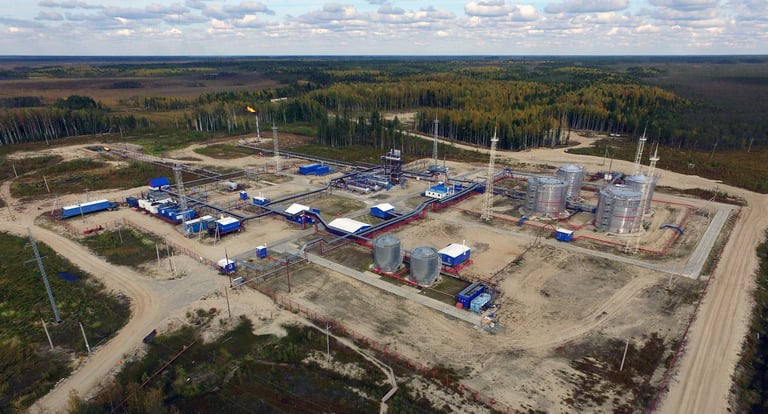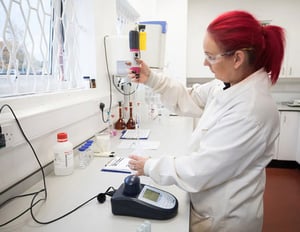PetroNeft Resources plc (LON:PTR) Chief Executive Officer David Sturt caught up with DirectorsTalk for an exclusive interview to discuss how the production increase was achieved, what they are hoping to achieve with the two well fracking programme, the timing of production on License 67 and the progress of the additional 40% interest in that licence.
Q1: Good news on the production increase PetroNeft Resources announced earlier, can you explain to us though how this was achieved?
A1: We’re quite proud of what the team have achieved here, when you look at a normal oil fields, they tend to decline at varying rates, unless you have a drilling program or intervention work ongoing. Now what we’ve said is that clearly improving the understanding of our assets is crucial to us, we’ve had an ongoing improvement of the data we’ve acquired over our fields, and that’s allowed us to get a greater depth of understanding of the fields. Also, crucially, we put in place, I believe we said before, a good team in Tomsk and that basically means getting people who have experience of operating in this environment, operating on this type of geology setting.
What they’ve done is they’ve turned around what was a perennial decline and if you look at us historically, we were declining at 20/25% per year back in 2018, going into 2019 so to actually turn around this to an improvement in production without any deploying any real capital investment is a significant achievement.
The other thing is that by gathering more data, by getting smarter people improves your understanding of the risk going forward, which, again, improves your capital allocation model or your ability to predict things in a much more robust manner.
So, it all ties round with a great team in Tomsk and continued to improve the asset understanding which feeds through to the better investment decision longer term as well.
Q2: No, you mentioned in your release a two well fracking program, what are you hoping to achieve with the programme?
A2: Fracking is a technique that most companies look at using and with the right geology and the right conditions, it can be very successful, and the aim of fracking is basically to increase the production near term, which then increases revenue and cash flow and that is the main target.
With us, it’s kind of a two-pronged approach, clearly, we want to increase production, we want to increase revenue, we want to increase cashflow, but we also want to continue improving the understanding of our assets.
If you look at the two wells we’re fracking, we got Lineynoye-115, now Lineynoye-115 sits on the Lineynoye field in an area where we’ve carried out fracking program back in, I believe, 2010. In that particular program, it was pretty successful, it was from what we call the Pad 1. Lineynoye-115 was not that good, it had an improvement, but the problem was the well was fracked using what we call the helicopter approach, so everything was helicoptered in, which was expensive, and so rather than do a large frack, a small frack was carried out and it did have some positive results, but nowhere near as positive as the other wells.
So, what we’re doing is we’re looking at this, we’re seeing what the improvement will be after the frack, we anticipate an increase in production, the scale of the increases be quite important for us because it’s not just about this well, it’s about how we manage forward the continued development of Lineynoye. On success, we have a three or four well program for fracking of the other wells going into next winter.
On Sibkrayevskoye, the other well, that’s a slightly different story. On the S-373 well, on the Sibkrayevskoye field, that is a well that’s been in production all year round, since we connected the field up to the central processing facility at the start of 2020. Since that time, the well has been performing very well, it’s stable production, virtually no decline and so it’s encouraging for the forward development of this field, which has a great upside potential.
So, the fracking is aimed at increasing, again, the production of revenue, but it’s also about improving our understanding of the asset. The geology in this well and this field is very similar to geology of Lineynoye Pad 1, good thick sands well above the oil water contact so we can go in there with some great confidence that fracking should work.
Now, on success, if we go from a 200-250 barrels a day pre-fracked to say 300 barrels a day post-fracked, that again improves your understanding of how to develop the asset going forward, improves your economic analysis, particularly on the risk component, and again, it basically makes you build a much better capital allocation model going forward.
So clearly, it’s about improving production, improving revenue, and again, improving our understanding of the underlying asset and how to improve the performance going forward to improve the way we allocate our capital.
Q3: Now the imminent year-round production from license 67, can you talk a little bit about the timing and why this is so important for the company?
A3: Our target is for getting this on production by the second week of February, which is just around the corner, I think we may have been a few days early but in Siberia at the moment, as people have probably been following, it’s exceptionally cold. We’ve had temperatures below minus 50, and whilst our crew are incredibly tough and can work in these environments, it tends to slow things down a bit. We are still on target for second week of February and we’re almost there with turning the well on so that that’s a pretty hard deadline we don’t believe we’re going to miss.
In terms of why it’s important for us, obviously putting C-4 well on production is going to improve our production again, which feeds through to improve revenue, improved cashflow but it’s not just about how many barrels of oil a day you produce, it’s also about the value of that oil you produce.
Now in the Cheremshanskoye field, we benefit from a good infrastructure, which means that we’re able to sell that oil at wellhead so instead of having to transport the oil to the finery with transportation costs, we’re selling at wellhead. That makes the economics of a barrel of oil from this field very attractive.
In addition, we have a partial, like production tax exemption, it varies between 5-15% depending on other metrics so every barrel of oil we get this field is incredibly valuable.
Going forward, there’s very significant development potential for this field, there is a field very close by, I think about 500 metres away, that’s very similar in geology, already produced 36 million barrels of oil in multiple wells.
So, we see fantastic potential in this field, but also crucially, it’s not just about the amount of oil in the field, it’s also about the value of that or the why it’s so good for us and why it’s important to company.
Q4: Now wonder PetroNeft Resources want to increase the interest there. The last time we spoke, we talked about that additional interest of 40%, can you provide us an update on how that’s progressing?
A4: You make a very good point there, you can see why we want to increase our equity, we don’t wait a year or two when production’s up.
We can’t go out with exactly where we are at the moment because obviously no deal is done until it’s done but all I can say is that when we talked in our last interview, we said it’s going to be Q1, it’s going to be more towards the first half than the second half.
All I will say is we’re definitely on schedule, things are going well, and we’d expect some news on this fairly soon.







































